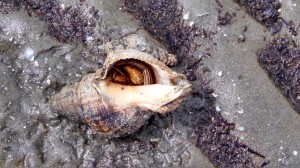In my reading about hermit crabs over the last few weeks, I’ve certainly gotten the sense that most hermit crab species aren’t in particularly precarious positions with regard to survival. While king crabs and coconut crabs are an exception, most species seem to be doing pretty well at the moment. That trend is likely to change, however, as the effects of global warming and ocean acidification become more obvious and intense. And a variety of other crab species are already feeling pressure from human activities.
The good news is that there are things we can do to support crab populations around the world- the suggestions that follow start with hermit crab conservation and then expand to a few other species since you may have a favorite that I haven’t mentioned before.
How to keep hermits in good shape:
- According to the Monterey Bay Aquarium, removing live crabs from tidal pools is a no-go, but we should also be wary of removing empty shells since hermits depend on a regular supply as they move up the property ladder
- Since hermit crabs are an important component of mangrove swamps and marshes, you can help crab populations around the world by contributing to the Mangrove Action Project– you can adopt a specific project which will benefit ecosystems and human populations
- Island Conservation works, in part, to help coconut crabs and they can always use volunteers and/or donations
- If you are interested in learning more about and supporting efforts to help king crab populations in Alaska, check out the Alaska Marine Conservation Council for ways to get involved
For other species of crab:
- Fauna and Flora International has a Flagship Species Fund which includes a program focused on land crabs from Ascension Island, and you can also get involved in this work through the government of Ascension
- Florida Fish & Wildlife is looking for help to document the location of horseshoe crab nests, and they also have programs for blue crabs and stone crabs
- You can learn about horseshoe crabs and their relationship with shorebirds at the New Jersey Spring Shorebird & Horseshoe Crab Festival each May
And for crabs in your cooking:
- The New England Aquarium recommends substituting Dungeness crabs for other crabs on recipes since those stocks are well-managed and their flesh is tasty

